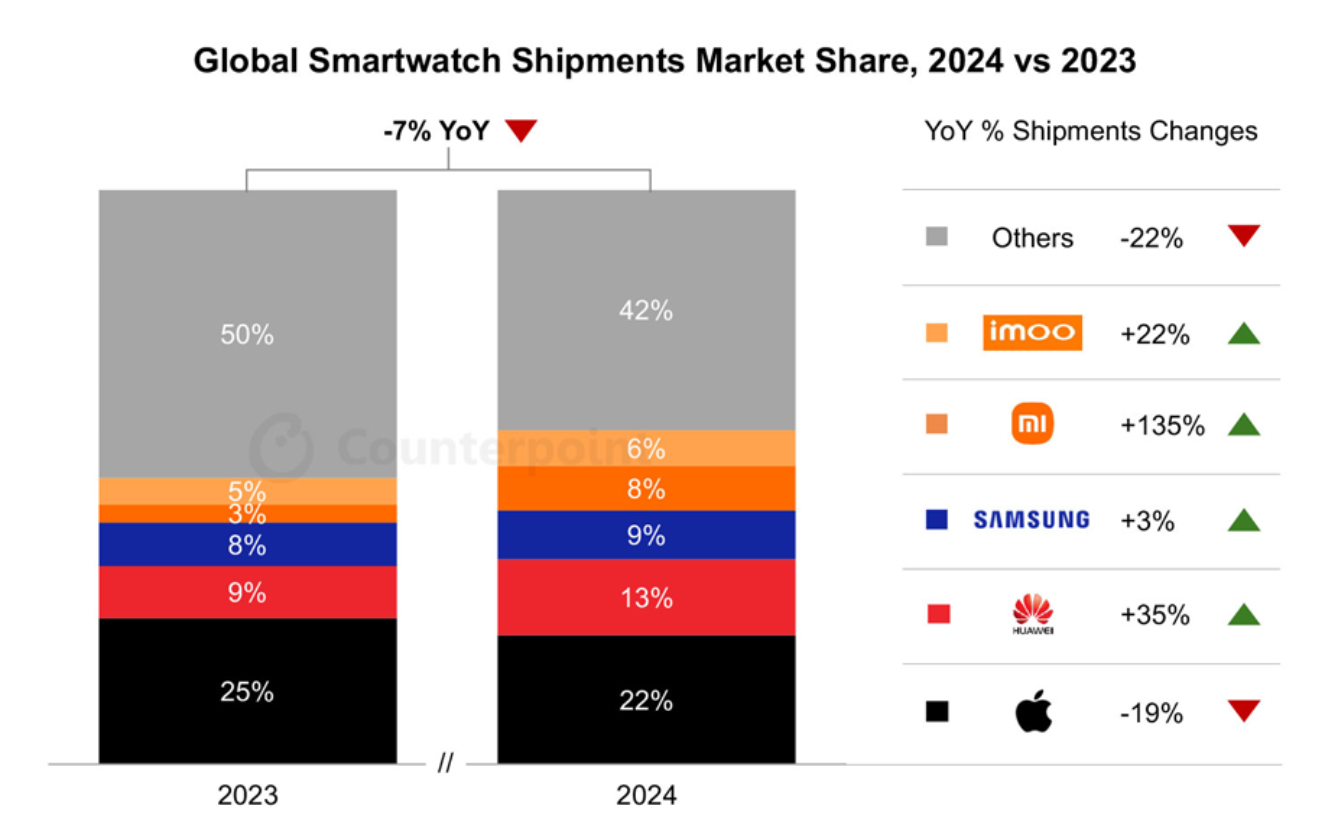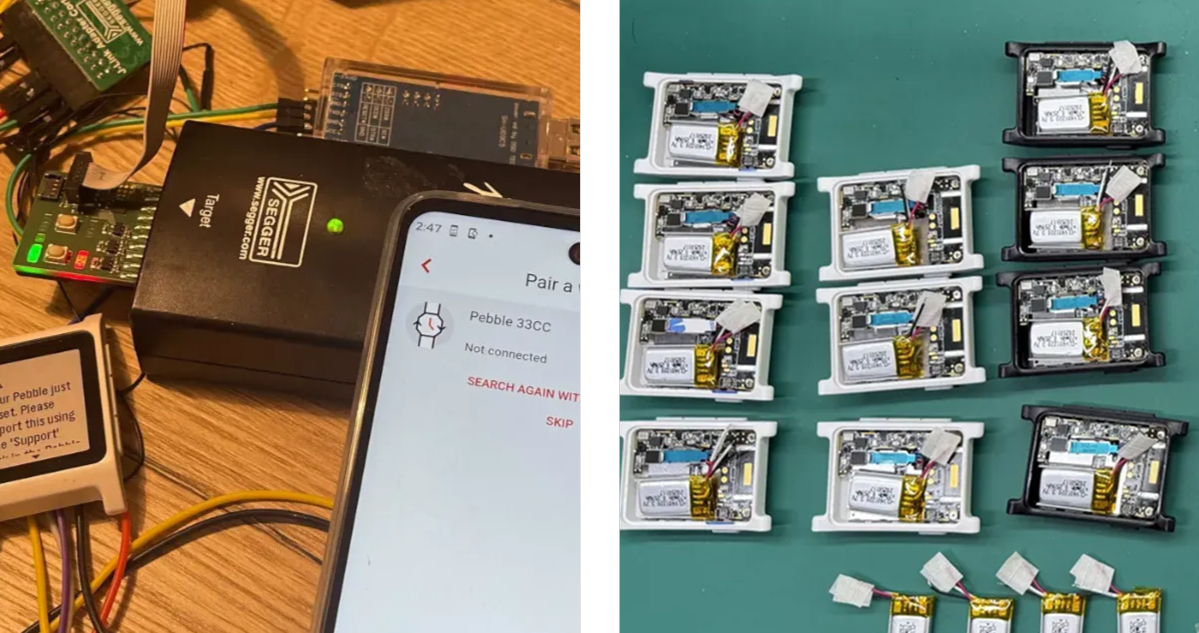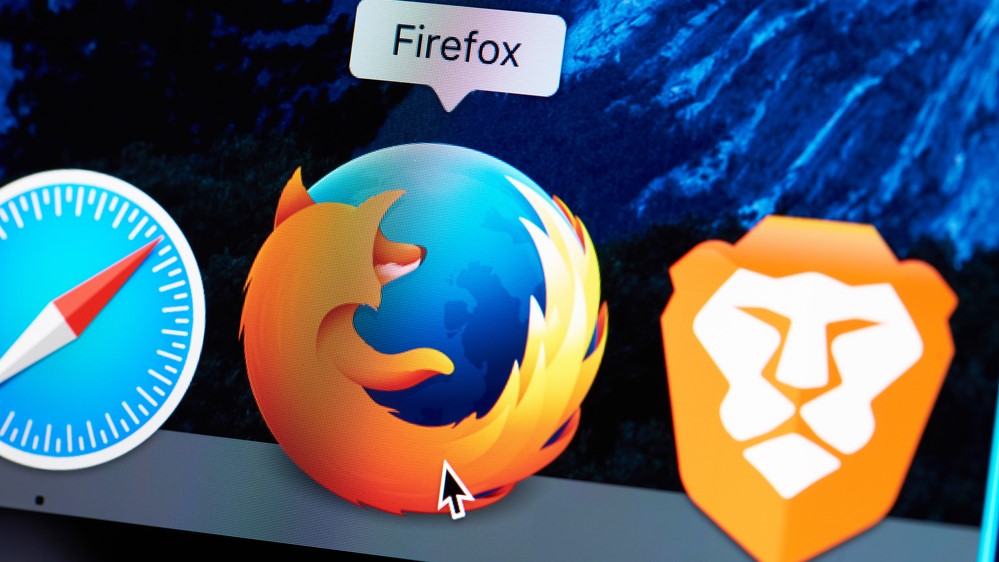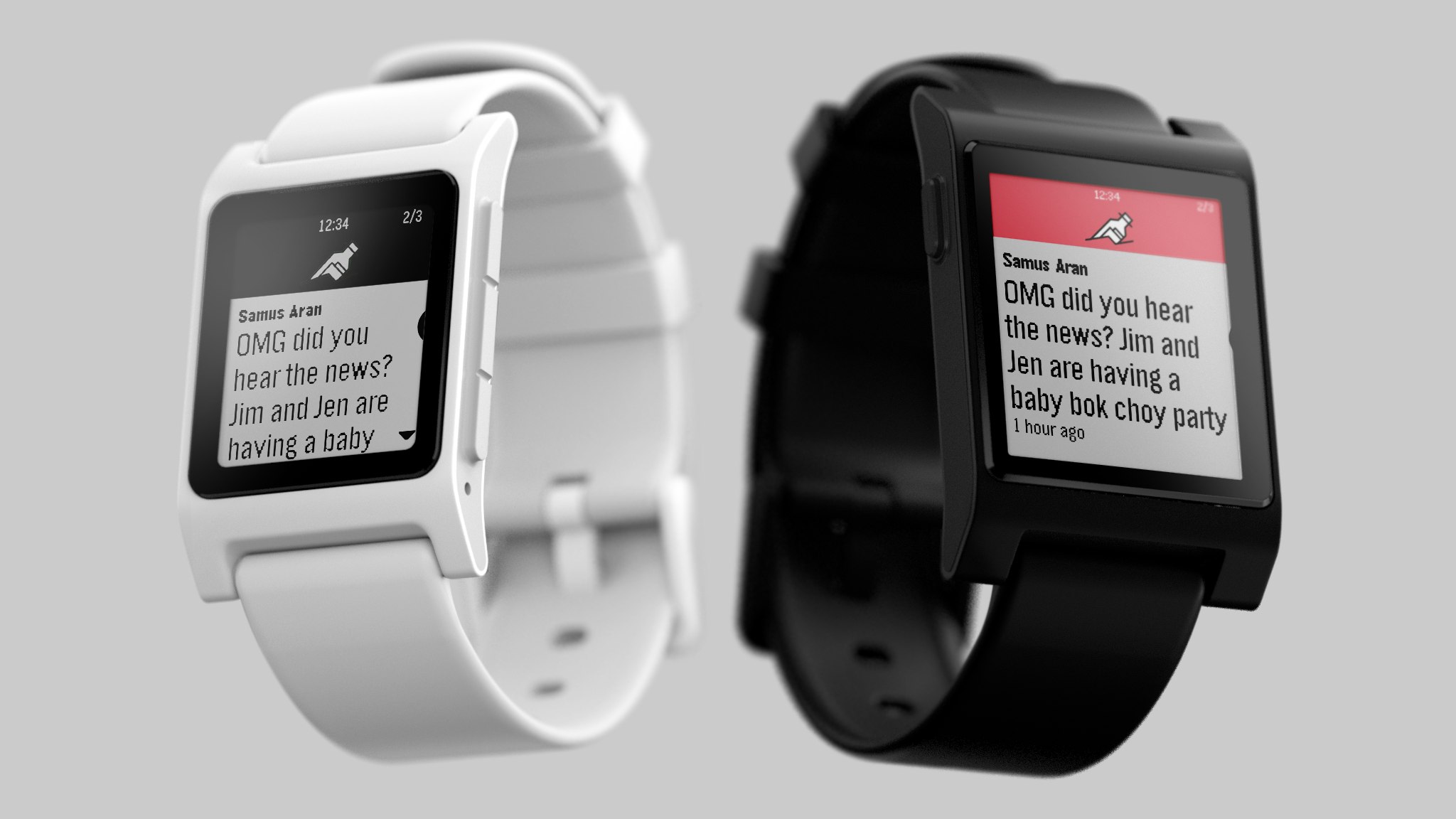In tech, as in so many areas of life, what’s old inevitably becomes new again. Netflix and Amazon Prime are shelling out for live broadcasts, circling right back around to becoming cable TV. In gaming, modern-gen consoles are awash with remakes and remasters. Phones are now opting for a foldable form factor, imitating an old-fashioned flip phone or Game Boy Advance SP.
The smartwatch market is showing the first signs of stagnation, and we’re desperate for something new – and as with the examples above, we might have found it in something old: the Core Time 2 and Core 2 Duo, two devices based on the now-defunct Pebble smartwatch. Both devices last 30 days, boast low-power screens, and run the now open-source Pebble OS. It’s a very different approach to the smartwatch concept in every way, and these watches – built on the old-internet philosophy of community hacking – might be just what we need in 2025.
Since the first Fitbit, which was little more than an electronic pedometer, was introduced in 2009, smartwatches and fitness tracker-like devices have been the must-have, high-tech gadget to keep you healthy and make everyday life easier. The idea of a watch that can become an interactive GPS map, or a heart-rate monitor, or a pedometer, or can even allow you to read and respond to your emails, seemed like science fiction as little as 15 years ago.
Now, we’re simply bored of them: the smartwatch market shrank in 2024 by 7% according to a report by analyst firm Counterpoint – its first decrease ever. The slowdown was said to be due in part to Apple’s incremental annual upgrades, as well as the lack of an Apple Watch SE 3 and Apple Watch Ultra 3, both of which were at one time rumored to be landing in 2024.
Is the smartwatch market getting stale?

Apple didn’t invent the smartwatch, but it is the most popular brand by a wide margin, and as a result its designs cemented the basic form factor smartwatches would take. The watches in our best smartwatches guide include Apple Watches, Samsung Galaxy Watches, Google Pixel Watches and more, but whether round or square, they all offer bright screens (usually OLED or AMOLED) and short battery lives, unless you’ve picked up a dedicated exercise tool like one of the best running watches.
You can expect 18 hours of battery life from your common-or-garden Apple Watch at most, in part due to the demands on the small device to constantly monitor your health metrics and regularly send information to your phone, not to mention displaying that information on the watch itself at up to 3,000 nits of brightness, all while running many of the tasks and apps you’d expect from a powerful smartphone.
The Core 2 Duo, on the other hand, has a black-and-white e-paper screen, the sort of thing you might find on an e-reader, and a few basic functionalities such as an accelerometer for counting steps and sleep tracking. The Core Time 2 has a color touchscreen using the same e-paper technology, a metal case instead of the 2 Duo’s polymer one, and a basic heart rate monitor. As previously mentioned, both watches last 30 days.
Original Pebble founder Eric Migicovksy believes that, due to the aforementioned widespread adoption of the same old form factor, we’ve already hit peak smartwatch design, and there was a demand for something new (by which we mean old). In an interview with TechRadar, he told me: “Big companies are making the same glass-and-metal slabs – there’s not too many startups that survive that build fun, quirky technologies that make you smile. That’s my goal.”
After founding Pebble, Migicovsky sold the company to Fitbit in 2016, and Fitbit was itself gobbled up by Google in 2021. Since then, Migicovsky has been quietly working with Google on releasing the original PebbleOS, and all the 10,000-plus apps already made for it, as open-source software. Google finally launched it in January 2025.
“Obviously I had been working with Google to release PebbleOS into the wild, but [creating new watches] has been in the works for a little while,” Migicovsky explained.
What is open-source software?

Software can be described as open-source if its code is made available for others to freely modify and redistribute. According to the California-based Open Source Initiative, it must be distributed in such a way that it complies with the Open Source Definition, a list of rules for the free distribution of a software’s source code.
These rules are pretty extensive, but among other things the software must be ‘technology neutral’ rather than locked to a single piece of tech; must ‘not restrict other software’, and ‘must allow modifications and derived works, and must allow them to be distributed under the same terms as the license of the original software’.
Some famous examples of open-source software include the Linux operating system and Firefox web browser.

Open-source software was built on the principles of an internet that doesn’t really exist today. It’s no secret that Apple, Samsung and Google use their proprietary software and hardware to lock buyers into a ‘walled garden’: you can only use an Apple Watch with an iPhone, and the Samsung Galaxy Watch’s best features only work with a Samsung Galaxy Phone. Having an open-source OS and phone app, free for use and amendment by anyone, flies in the face of that philosophy.
It also creates total transparency. Our health data is far more valuable than most people might imagine, and when a device is monitoring our sleep, health and location info it’s important to know where that information is going. Speaking about Pebble’s heyday, Migicovsky said, “Last time, you had to trust us; use our app, use our firmware, and trust it would do what we said it would do.”
This statement is eerily reminiscent of Mark Zuckerberg’s famous comments on user data, leaked from a private message in 2010 and published by Business Insider: “People just submitted it. I don’t know why they ‘trust me.’ Dumb f***s.”
These days, Migicovsky believes that transparency, and therefore open-source, are the best solutions to this one-sided relationship.
“This time, you don’t even have to trust us: you can literally read every single line of the codebase yourself,” he said. “Change it, modify it, you can see it making connections and alter it, if you want. The watch will work without connecting to a phone, it can show you your steps and everything, but even the phone app’s open-source, so you can see what the phone app’s doing.
“You can’t get better than that; that’s the crème de la crème of personal identity and tracking. If you don’t need an app, you don’t want an app, and if you do it’s open-source.”
Is the PebbleOS way a better way?

While the idea of complete transparency is admirable, it’s obviously impossible beyond a niche product in this market. Does everyone want a smartwatch that lasts 30 days? Of course. Will everybody want a low-power smartwatch they’ll be encouraged to hack themselves? Of course not. But Migicovsky is starting small, with his two-person Core Devices company and a handful of contractors.
“My hunch is that there are enough people who are not being moved by the same circles and squares and glass and metal that everyone else is doing, and their eyes might catch at this,” he said. They might say “Oh, I’ll give it a shot, let’s try’.”
While Pebble may not be a major disruptor in the smartwatch space yet, I’m willing to bet there are quite a few people out there who are sick of playing in someone else’s walled garden, and yearn for the Wild West of the early internet.
We’ll get an idea of just how many when both Core Watches go on sale in July. If demand is high enough for these old-school smartwatches, it might just encourage others in the industry to turn the clocks back.
You might also like…
https://cdn.mos.cms.futurecdn.net/x6gWTePSa7fDudySfa3o5E-1200-80.png
Source link
matt.evans@futurenet.com (Matt Evans)




